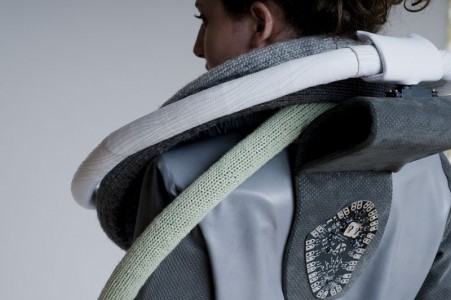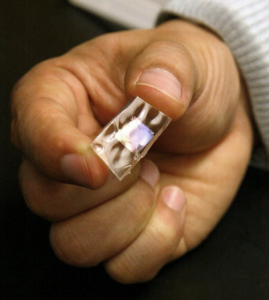 [gallery]
[gallery]
Continuing on the topic of alternative power harnessing, the latest exploration from Joanna Berzowska and the folks at Extra-Soft Labs is a series of power-generating garments titled Captain Electric. Sticky, Stiff and Itchy harness energy both passively and actively through the activity of fidgeting, fussing, stretching and pulling at our clothes.
"Using inductive generators, we convert kinetic energy from the human body into electric energy and store it within a power cell integrated into the garments. Rather than attempting to conceal the generators and their operation, we chose to overtly integrate them into the garment concept and design." (captain-electric.net)
Here's how Captain Electric describes each of the garments:
Sticky
Sticky is a hooded leather dress that impedes natural body movement. The sleeves of the dress are tethered to hard shells on the chest and hips. This restriction forces the body to move in more pronounced and powerful motions, actively generating energy to fuel the dress. The accumulated power feeds a series of LEDs integrated in silicone forms sewn into the pocket, concealed from view.
Stiff
Reminiscent of the posture caused by muscular stiffness, the silhouette of Stiff draws emphasis to the back and shoulders of the individual. As she pushes her back against the wall or experiences pressure on her back from another user, the energy generated activates an mp3 player and speaker integrated into the hood, which plays soothing and comforting (though often conflicting) messages.
Itchy
Itchy’s tailored leather silhouette is decorated with large reconfigurable wool necklaces. The face is surrounded with layered structure, drawing attention to its features while also offering a sense of comfort and protection from other peoples’ gaze. The layering of necklaces is evocative of bulky wool turtlenecks and their itchiness compels the user to grasp them and move them back and forth on the body.
Read more on Captain Electric.
Images from Captain Electric.


